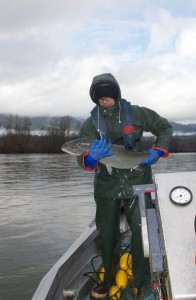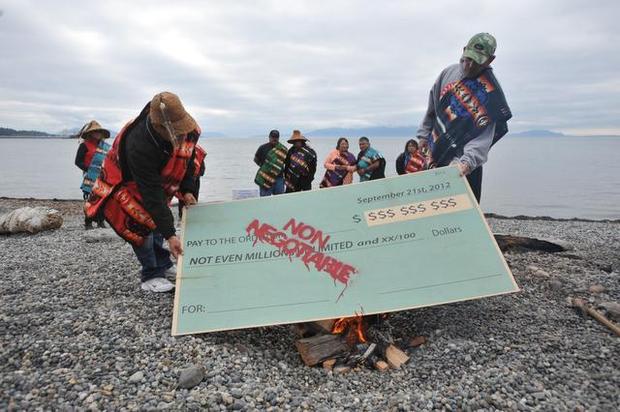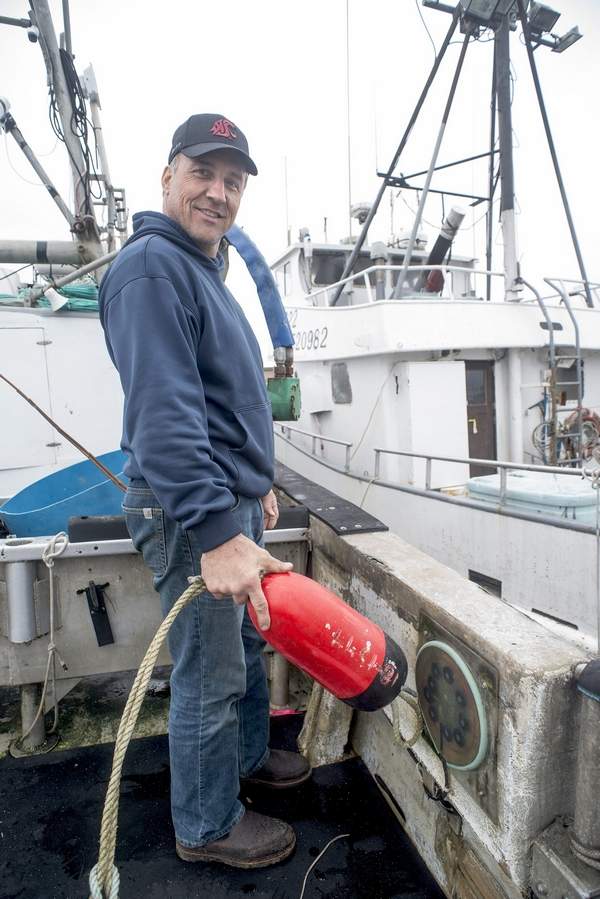By JENNIFER McDERMOTT, Associated Press
PROVIDENCE, R.I. (AP) – University of Rhode Island researchers are working with Native Americans to ensure that energy companies hoping to erect massive wind turbines off New England don’t inadvertently disturb the tribes’ ceremonial sites and burial grounds, now submerged under hundreds of feet of water.
Providence-based Deepwater Wind is planning what could be the nation’s first offshore wind farm, located off the coast of Block Island. But federal regulators and Native Americans worry that wind turbines could inadvertently be parked on top of the sunken lands where Native Americans lived thousands of years ago.
Narragansett Indian Tribe oral history holds that they lived on land that is now off Rhode Island’s shore more than 15,000 years ago until their villages were inundated by water and they had to evacuate. Sea level was about 400 feet lower globally during the last Ice Age and what is now covered by water was once dry land.
With the help of the tribe, researchers are trying to figure out the best way of searching the ocean floor to identify ancient archaeological sites so they aren’t disturbed.
If one was ruined, “It would not only be a loss to the Narragansetts, it would be a loss to the world,” said John Brown, the tribe’s historic preservation officer.
When offshore wind developers began focusing on southern New England, Native Americans said they were concerned about their sacred sites. And federal regulators realized they didn’t know how to find the sites to avoid affecting them, said Brian Jordan, the federal preservation officer at the Bureau of Ocean Energy Management.
“That was a pretty big awakening for our bureau,” Jordan said.
The oceans bureau gave URI $2 million for a four-year study in 2012, with the hope that the bureau could use the study’s recommendations for identifying potential sites to update its guidelines nationally, Jordan said. Energy companies must do site surveys now as part of the permitting process, and federal agencies require them to avoid harming historical and archaeological sites at sea, when possible.
The project’s principal investigator, URI professor John King, and his team collected samples of submerged sediments in Greenwich Bay in Warwick with a machine that vibrates through the top layers of sand and mud. They analyze the sediment for signs of human activity, such as seeds from plants grown by people or flakes from arrowhead-making, to decipher what the landscape looked like thousands of years ago.
The five-turbine Block Island proposal is one of several offshore wind farm projects in the works along the Eastern seaboard. Construction is slated to begin later this year so the wind farm can begin operating in 2016.
Deepwater Wind has also been granted a lease to build a wind farm of at least 200 turbines between Block Island and Martha’s Vineyard. Cape Wind is planning for a 130-turbine wind farm off the coast of Cape Cod, though the future of that project is in doubt. The federal government has said areas off New Jersey, Virginia and Maine are suitable for offshore wind development, too.
“This study is forward-thinking,” Jordan said. “A lot of projects are still in the planning phase, and hopefully it will inform a lot of those.”
Deepwater Wind hired marine archaeologists to scan the area around the Block Island wind farm using sonar and other instruments, said CEO Jeffrey Grybowski. They did not find any cultural artifacts, but the company is moving its transmission cable slightly on land because what appeared to be stone tools were in its path.
“The offshore wind industry would very much like to see some standardization in the process over time and best practices,” Grybowski said. “To the extent that our survey techniques can improve, I think the industry would embrace that.”
King said the method he’s testing could be used to further investigate anything that appears interesting during the ocean surveys. He said it’s important to develop a technique that is less destructive than conventional archaeological digging out of respect for tribal cultures.
The Narragansett Indians helped Deepwater Wind, and they’re sharing their oral history and local knowledge with the URI team. Doug Harris, the deputy tribal historic preservation officer, said the tribe’s ancestors had a close relationship with life.
“There was always a respectful, reciprocal relationship,” he said. “If we humans are going into their territory, we should tread softly and cautiously and respectfully. We’re trying to bring that dimension to this process.”
Copyright 2015 The Associated Press. All rights reserved. This material may not be published, broadcast, rewritten or redistributed.




















